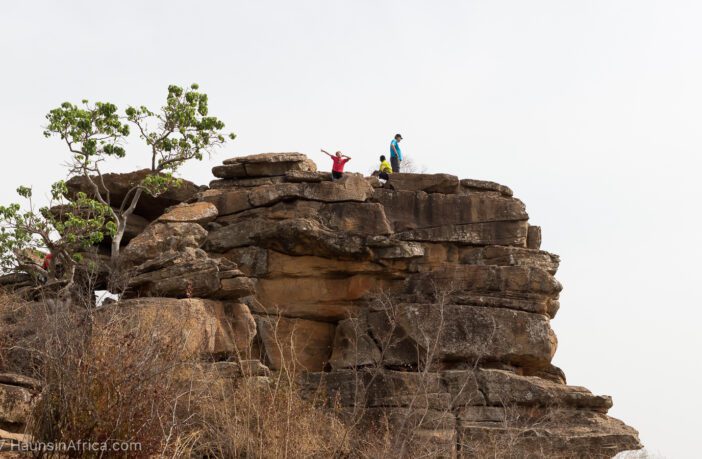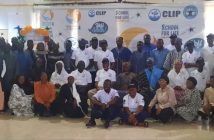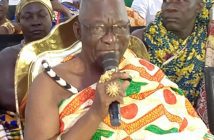The Northern Region which is one of the sixteen regions of Ghana is located in the north of the country and was the largest of the sixteen regions, covering an area of 70,384 square kilometres or 31 per cent of Ghana’s area until December 2018 when the Savannah Region and North East Region were created from it. The Northern Region is divided into 14 districts with its capital as Tamale.
The Northern Region is much drier than the southern areas of Ghana, due to its proximity to the Sahel, and the Sahara. The vegetation consists predominantly of grassland, especially savanna with clusters of drought-resistant trees such as baobabs or acacias.
The dry season is usually between January and March, and the wet, from July to December, with an average annual rainfall of 750 to 1050 mm (30 to 40 inches). The region is clad with many historical centres such as the: Naa Gbewaa Palace, Yendi, Saakpoli Slaves wells, Diarre Napagaduungbanani, Naa Binbegu Boabab Tree, Yendi, Buntaga Irrigation Dam, Sabali (River Oti), Nawuni River (White Volta).
In this region are old towns that hold so much historical significance to the growth of the region as a whole. Below are a few of these towns.
First, we have the Nakpanduri, this is a village in Bunkpurugu-Nakpanduri District, a district in the North East Region of northern Ghana adjacent to the Togo border. Visitors to this part of the Northern Region can go on tour to the Gambaga Scarp and the Waterfall in Nakpanduri which always does the trick of showing to the people who visit, the great reserve and calming greenery on sight. As well as learning the cultural roots of the town.
Next is Larabanga, which is a village in West Gonja district, and a district in the northwestern part of the Northern Region of Ghana. The village is known for its oldest mosque, said to date from 1421. It was at the height of the trans-Saharan trade. It is reputed to be Ghana’s oldest mosque and houses a copy of the Qur’an almost as old as the mosque itself.
The village is also known for its Mystic Stone, for its patterned vernacular architecture and as the entrance to the Mole National Park.
Legend has it that, during the British rule, there was a road that was laid near the Larabanga Mosque. A stone was removed during the process to make way for the road. The next day, the stone was found again in the same place it was displaced from. The stone was again removed and the same thing happened the next day. Later, the officials decided to build the road around the stone and it became known as the Mystic Stone.
The third ancient town in the northern part of Ghana is the Salaga town, this town is also the capital of East Gonja district, a district in the Savannah Region of north Ghana. The name Salaga comes from the Dagomba word “salgi” which means “To get used to a place of abode”.
In the eighteenth and nineteenth centuries, Salaga served as a key market town particularly for the busy regional kola trade and controlling Salaga gave a monopoly over trade to the North and trade to the South. Situated in the southernmost reaches of the Sahel, Salaga was referred to as “the Timbuktu of the south” for its cosmopolitan population and varied trade. Gonja, a powerful warrior kingdom, ruled Salaga and several other towns. However, Salaga being a cosmopolitan town was inhabited by the indigenous Gonja as well as Hausas, Wangaras, Dagombas, Gurmas and other groups from the region.
Salaga was central to the emergence of the Zabarima (emirate) as a power in the area that is now northern Ghana, when the scholar Alfa Hano and the warrior Gazari migrated here from their former homes south-east of Niamey in the 1860s.
The Salaga market served as a transit point through the northern Sahel and the southernmost coast of the ‘Sahel’ as well as through the Dagomba towns of Kpabia and Yendi. This resulted in transport of cattle and groundnuts from Yendi via the Salaga market.
It also was the transit point through which kola was transported from modern-day Ghana to northern Nigeria. During the Trans-Atlantic slave trade, Salaga also served as an important market from where slaves were transported to the coast for export. This is why a market in Jamestown is called the “Salaga Market”. It used to be a slave market where the slaves from the Salaga slave market were sold. In 1892, civil war broke out in Salaga resulting in a mass exodus of mostly Zongo peoples out of the area.
The fourth but definitely not the least, we have the Daboya town. Daboya is the capital of the North Gonja District, a district in the Savannah Region of north Ghana. Daboya is represented by the Daboya-Mankarigu constituency. It is a historical place in Ghana. Daboya was formerly known as ‘Burugu’ which means a well in both the Tampluma and Dagomba languages. It was one of the very few places the inhabitants of the area could get good drinking water in the olden days.
Legend has it that, after the conquest of the Tampluma people on the Western banks of the White Volta River, Ndewura Jakpa placed the land under the authority of his daughter. She was known as ‘Buruwuche’ (Burugu-wuche or chief of Burugu). The indigenous owners of the land though were the Tampluma people and their Chief was called Janbologuwura.
One day a leper visited the town and as tradition demands were taken to Buruwuche, who then referred the visitor to the Jangbologuwura. The leper was well received and properly taken care of by both Buruwuche and the Jangbologuwura. The leper who is said to possess supernatural powers was very pleased with the reception he received. So much so that before departing the town he asked his host to show him a place where grass does not grow. He was taken to one such location where he dug a small well and performed some rituals. He then gave some instructions that, when it rains the well will be filled with saltwater and from then on, the salt shall become available to the people of the land all the days of their life.
He also predicted that the stream in the town shall expand to become a river. His predictions came to pass and salt became abundantly available to the inhabitants and the stream expanded to become the river we know today. However, the Dagombas around the area also took interest in the salt and will either come around to steal some or harass the people for salt.
Be sure to take a trip to these aforementioned towns whenever you can to learn about the cultural roots of the towns as well as the Northern Region of Ghana, while enjoying the Savannah views in general.





